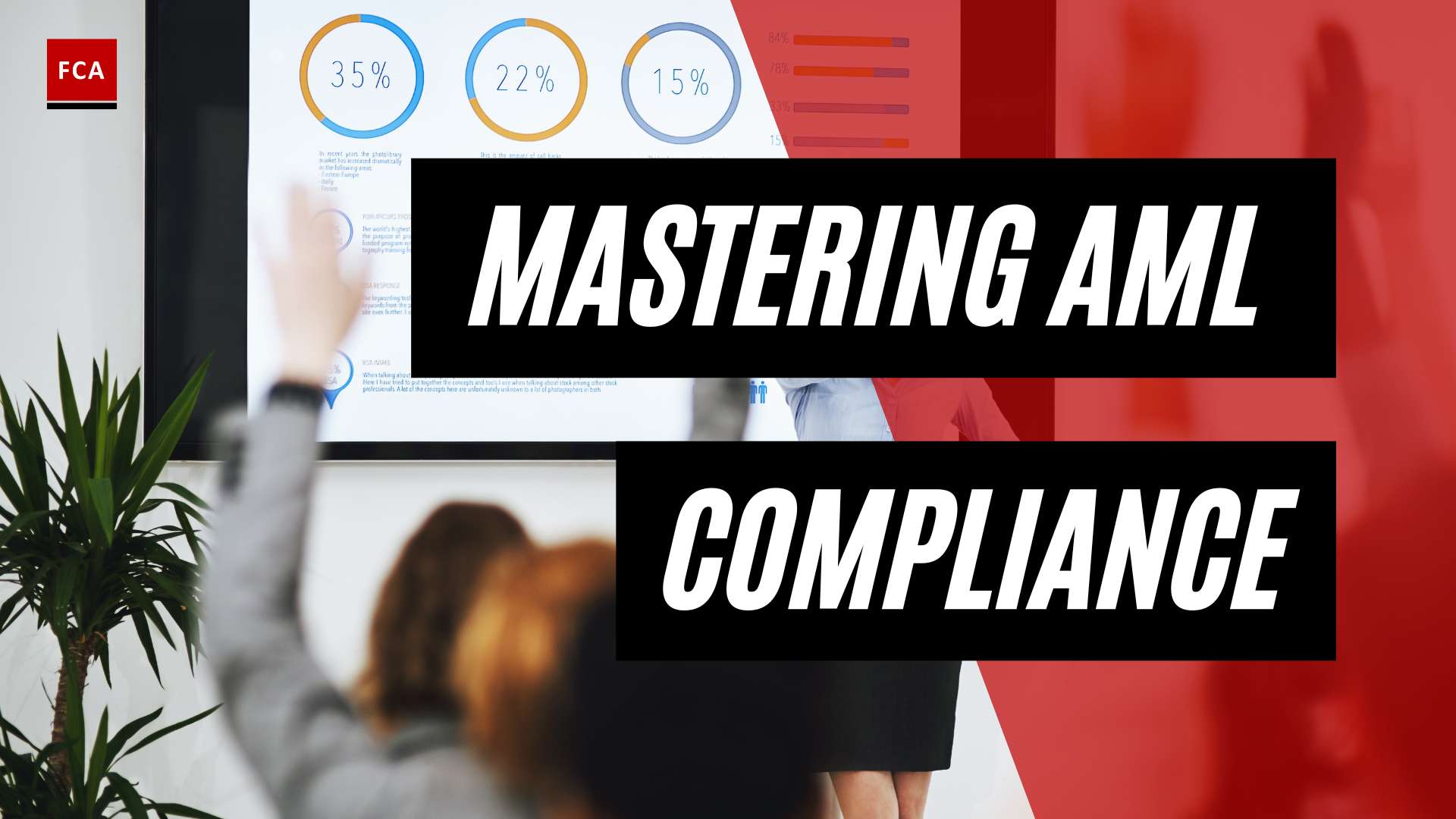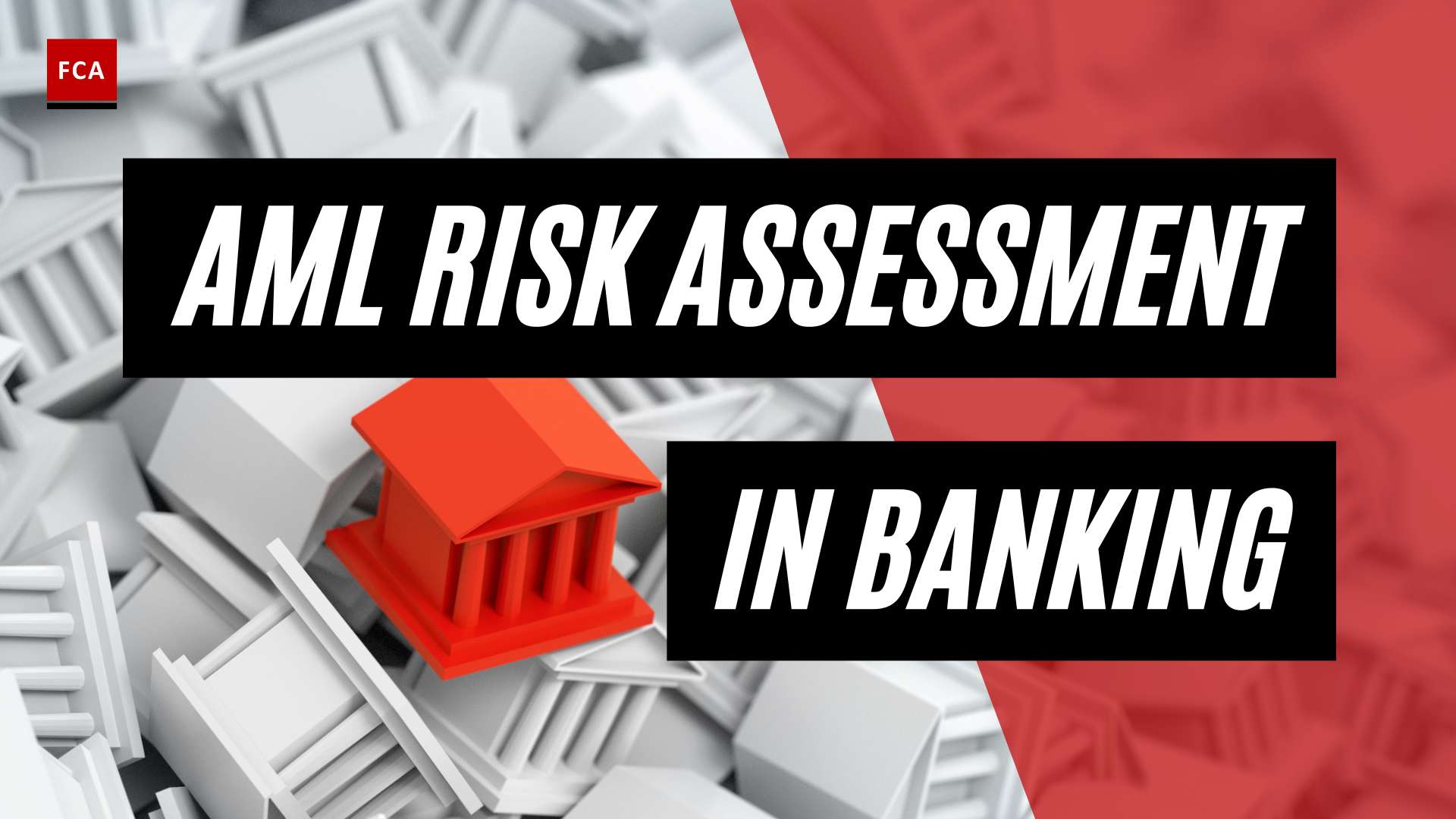AML Software for Insurance Companies
When it comes to combating financial crimes, insurance companies can greatly benefit from utilizing AML (Anti-Money Laundering) software. AML software plays a crucial role in helping insurance companies adhere to regulations such as the Bank Secrecy Act, USA PATRIOT Act, and Financial Action Task Force recommendations by incorporating these requirements into their systems for better compliance.
The Importance of AML Software
The importance of AML software for insurance companies cannot be overstated. It assists organizations in verifying customers, flagging suspicious transactions and behaviors, screening sanctions and PEP (Politically Exposed Person) lists, and mitigating false positives faster and more effectively than manual processes. By automating risk management processes, AML software makes it easier for insurance companies to monitor customer information and detect abnormal transactions, thereby strengthening their ability to prevent financial crimes.
Benefits of AML Software in Insurance
The implementation of AML software brings numerous benefits to insurance companies. These include:
-
Enhanced Compliance: AML software ensures insurance companies comply with regulatory obligations and reduces the risk of non-compliance. It assists in monitoring transactions, conducting customer due diligence, and reporting suspicious activities to regulatory authorities.
-
Improved Efficiency: AML software automates various AML processes, streamlining operations and increasing efficiency. It leverages artificial intelligence and data science to optimize AML operations, leading to quicker, more agile, and more accurate performance of AML requirements.
-
Risk Mitigation: AML software provides insurance companies with risk assessment tools to identify and assess potential money laundering risks. It helps in screening customers against sanctions and PEP lists and flagging suspicious activities, allowing for prompt investigation and mitigation of risk.
Top AML Software Solutions
Several AML software solutions are available in the market, designed specifically for insurance companies. These software solutions offer various tools and capabilities to optimize AML compliance operations. Some prominent AML software providers for insurance companies include:
| Software Provider | Description |
|---|---|
| Provider A | Offers comprehensive AML software solutions tailored to the insurance industry. Provides features such as transaction monitoring, customer identity verification, risk assessment tools, and reporting capabilities. |
| Provider B | Specializes in AML software for the insurance sector, providing advanced analytics and real-time monitoring capabilities. Offers customizable solutions to meet specific compliance needs. |
| Provider C | Offers a range of AML software solutions for insurance companies, including integrated case management systems, automated reporting, and efficient risk assessment tools. |
When evaluating and choosing an AML software solution for insurance companies, it is essential to consider factors such as the specific compliance requirements of the organization, scalability, ease of integration with existing systems, and vendor reputation. Implementing AML software should be part of a broader AML compliance framework and executed as part of a risk-based approach tailored to the specific requirements of the insurance company.
By leveraging the capabilities of AML software, insurance companies can enhance their compliance efforts, improve operational efficiency, and mitigate the risks associated with money laundering and other financial crimes. It is important for insurance companies to carefully evaluate and select the most suitable AML software solution to meet their specific compliance needs and drive effective AML implementation within their operations.
Key Features of AML Software for Insurance
To effectively combat money laundering and ensure compliance with anti-money laundering (AML) regulations, insurance companies rely on specialized AML software solutions. These software solutions offer a range of key features designed to enhance the effectiveness and efficiency of AML compliance efforts. Let’s explore some of the essential features of AML software for insurance companies.
Transaction Monitoring
Transaction monitoring is a critical component of AML software for insurance companies. This feature allows insurers to identify and analyze customer transactions in real-time, looking for suspicious patterns or activities. AML software utilizes advanced algorithms and rule-based systems to flag potentially illicit transactions, enabling insurance companies to promptly investigate and report suspicious activities to the relevant authorities. By effectively monitoring transactions, insurance companies can mitigate the risk of being unwittingly involved in money laundering schemes.
Customer Identity Verification
Customer identity verification is another crucial feature provided by AML software. It enables insurance companies to verify the identities of their customers and assess the risk associated with each individual. AML software utilizes a variety of techniques, such as document verification, biometric authentication, and watchlist screening, to ensure that customers are who they claim to be and to identify any high-risk individuals or entities. By implementing robust customer identity verification processes, insurance companies can reduce the potential for fraudulent activities and comply with the necessary regulatory requirements.
Risk Assessment Tools
AML software for insurance companies often includes risk assessment tools to help evaluate the level of risk associated with specific customers, transactions, or business relationships. These tools utilize various parameters, such as customer demographics, transaction history, and geographical factors, to assign risk scores or categories. By conducting comprehensive risk assessments, insurers can prioritize their AML efforts, focusing resources on the highest-risk areas and individuals. This proactive approach helps to prevent money laundering activities and ensures compliance with regulatory obligations.
Reporting Capabilities
Reporting capabilities are a fundamental feature of AML software for insurance companies. These capabilities enable insurers to generate and submit accurate and timely reports to regulatory authorities as required by AML regulations. AML software streamlines the reporting process by automating the creation of reports and ensuring that they contain the necessary information to meet regulatory standards. By maintaining proper documentation and submitting reports on time, insurance companies can demonstrate their commitment to AML compliance and avoid potential penalties.
By incorporating these key features, AML software empowers insurance companies to establish robust AML compliance programs. These software solutions help insurers identify suspicious transactions, verify customer identities, assess risks, and generate accurate reports for regulatory authorities. It is important for insurance companies to carefully evaluate and select AML software solutions that align with their specific needs and regulatory requirements. For more information on evaluating and choosing AML software for insurance companies, refer to our section on Evaluating and Choosing AML Software for Insurance Companies.
AML Compliance in the Insurance Industry
To combat the risks of money laundering and financial crime, insurance companies are subject to regulatory obligations and compliance requirements. Understanding these obligations is essential for insurance companies to maintain a robust anti-money laundering (AML) program. This section explores the regulatory obligations for insurance companies, the penalties for non-compliance, and international AML regulations that impact the industry.
Regulatory Obligations for Insurance Companies
In the United States, insurance companies fall under the purview of the Bank Secrecy Act (BSA) introduced in 1970. The BSA imposes AML compliance obligations on financial institutions, including insurance companies. Under the BSA, qualifying insurance companies are required to establish AML programs and file suspicious activity reports (SARs) through the regulator’s e-filing portal (ComplyAdvantage). This ensures that insurance companies play an active role in detecting and preventing money laundering and other illicit financial activities.
Similarly, other countries and regions have their own regulatory frameworks governing AML compliance in the insurance industry. For instance, in the European Union (EU), AML/CFT regulations for insurance companies are enforced by national regulators based on EU standards, with directives applying exclusively to life and investment-related insurance. The European Insurance and Occupational Pensions Authority (EIOPA) provides oversight and guidance in this regard. Proposed reforms within the EU may extend AML obligations, posing concerns for the insurance industry.
Singapore’s insurance sector is regulated by the Monetary Authority of Singapore (MAS), which sets AML/CFT obligations. While life insurers are subject to specific requirements through Notice 314, all insurers must assess AML/CFT risks and implement risk-appropriate measures. MAS encourages the use of regtech, machine learning, and advanced techniques to enhance AML/CFT compliance in the insurance industry (ComplyAdvantage).
Australia regulates insurers through the Australian Prudential Regulation Authority (APRA), with the Australian Transactions Report and Analysis Centre (AUSTRAC) supervising AML/CFT compliance. The AML/CFT Act applies to life insurers, sinking fund providers, and those advising on relevant products. Non-compliance can result in penalties and sanctions under the Autonomous Sanctions Act of 2011 (ComplyAdvantage).
Penalties for Non-Compliance
Non-compliance with AML regulations can have severe consequences for insurance companies. Penalties for non-compliance vary depending on the jurisdiction and the nature and extent of the violation. These penalties may include fines, reputational damage, loss of license, and even criminal charges in some cases. Insurance companies must prioritize AML compliance to avoid these penalties and protect their business and reputation.
International AML Regulations
International AML regulations also impact the insurance industry. Various global and regional organizations, such as the Financial Action Task Force (FATF), establish standards and guidelines to combat money laundering and terrorist financing. Insurance companies operating across borders must adhere to these international AML regulations and ensure compliance with the respective jurisdictions they operate in. Staying updated with international AML regulations is crucial for insurance companies to maintain a strong and effective AML program.
By understanding the regulatory obligations, penalties for non-compliance, and international AML regulations, insurance companies can implement robust AML measures to mitigate the risks of money laundering and financial crime. Compliance with these obligations not only helps protect insurance companies from legal and reputational risks but also contributes to the global efforts in combating illicit financial activities.
AML Software Implementation in Insurance Operations
To effectively combat money laundering and ensure compliance with regulatory requirements, insurance companies can implement AML software solutions. These solutions streamline various aspects of anti-money laundering processes within insurance operations. Here are key areas where AML software can make a significant impact:
Streamlining Customer Due Diligence
Customer due diligence (CDD) is a critical component of AML compliance in the insurance industry. AML software enables insurance companies to automate and streamline the CDD process, making it more efficient and effective. By leveraging advanced algorithms and artificial intelligence (AI) capabilities, AML software can analyze customer data, verify identities, and assess risk levels in a more accurate and timely manner. This helps insurance companies identify and onboard customers with confidence, ensuring compliance with regulatory obligations.
Real-Time Monitoring and Alert Generation
Monitoring transactions in real-time is crucial for detecting and preventing potential money laundering activities. AML software provides insurance companies with the ability to monitor transactions and customer behavior continuously. By utilizing advanced algorithms and data analysis, the software can identify patterns and anomalies that may indicate suspicious or fraudulent activities. When unusual activities are detected, the AML software generates alerts or notifications for further investigation. This real-time monitoring and alert generation capability allows insurance companies to take proactive measures and report any suspicious activities to regulatory authorities promptly.
Enhancing Risk Assessment Capabilities
Risk assessment is an essential component of effective AML compliance in the insurance industry. AML software empowers insurance companies to enhance their risk assessment capabilities by leveraging advanced technology and data analysis. The software can analyze vast amounts of real-time financial data, identify high-risk transactions or customers, and assess the overall risk profile of the insurance company. By utilizing the capabilities of AML software, insurance companies can stay ahead of emerging financial crime risks, protect their reputation, and ensure compliance with regulatory requirements.
By implementing AML software in their operations, insurance companies can streamline customer due diligence, monitor transactions in real-time, and enhance their risk assessment capabilities. These software solutions leverage advanced technology, such as AI and data analysis, to optimize AML compliance efforts within the insurance industry. This ultimately contributes to a more efficient and effective anti-money laundering program, reducing the potential for money laundering activities within insurance operations.
For more information on AML compliance in the insurance industry, regulatory obligations, and best practices, refer to our articles on anti-money laundering in the insurance sector, insurance industry AML regulations, and AML best practices for insurance companies.
Challenges in AML Compliance for Insurance Companies
Ensuring effective Anti-Money Laundering (AML) compliance can be particularly challenging for insurance companies. The unique characteristics of the insurance industry, combined with the diverse range of products and services it offers, present specific challenges in combating money laundering activities. In this section, we will explore the money laundering risks specific to the insurance industry, best practices for AML compliance in insurance companies, and the role of automation and technology in addressing these challenges.
Money Laundering Risks in the Insurance Industry
The insurance industry, with its vast, diversified, and prosperous nature, can be an appealing target for money launderers. Criminals may exploit insurance products, such as life insurance policies, to conceal illicit funds. Additionally, insurance products are often distributed through independent agents or brokers who may lack awareness of the importance of screening clients and investigating payment methods, inadvertently aiding money laundering activities.
Insurance companies must be vigilant in identifying and mitigating money laundering risks specific to their operations. This includes implementing robust Know Your Customer (KYC) procedures, conducting thorough risk assessments, and monitoring transactions for suspicious activities. By understanding the unique risks associated with the insurance industry, companies can implement effective AML measures to detect and prevent money laundering.
AML Best Practices for Insurance Companies
To ensure AML compliance, insurance companies should establish and follow best practices that align with regulatory requirements. Key practices include implementing robust customer due diligence processes, conducting ongoing monitoring of customer transactions, and establishing appropriate risk management frameworks. By implementing these practices, insurance companies can identify and mitigate potential risks, detect suspicious activities, and report them to the relevant authorities, thereby safeguarding their operations and the industry as a whole.
Insurance companies should also invest in employee training programs to educate their staff on AML regulations and the importance of compliance. This training should cover topics such as recognizing red flags, reporting suspicious activities, and understanding the consequences of non-compliance. By promoting a culture of compliance and awareness, insurance companies can significantly enhance their AML efforts and minimize the risk of money laundering.
Role of Automation and Technology
Automation and technology play a crucial role in enhancing AML compliance in insurance companies. AML software solutions provide advanced capabilities for detecting and preventing financial crimes, including money laundering. These software solutions enable insurance companies to streamline their processes, improve efficiency, and minimize the potential for money laundering activities within their operations. By leveraging automation and technology, insurance companies can enhance their risk assessment capabilities, stay ahead of emerging financial crime risks, and protect their reputation in the market (Finscan).
AML software enables insurance companies to streamline customer due diligence processes by automating identity verification, screening against sanctions lists, and conducting risk assessments. Real-time monitoring and alert generation features help identify suspicious transactions and activities, allowing companies to take prompt action. Furthermore, AML software provides robust reporting capabilities, ensuring compliance with regulatory obligations and facilitating audit trails (Finscan).
By leveraging the power of automation and technology, insurance companies can strengthen their AML compliance efforts, detect and prevent money laundering activities, and contribute to the overall integrity of the financial system. Implementing AML software solutions tailored to the specific needs of the insurance industry is crucial in effectively addressing the challenges associated with AML compliance.
In the next section, we will explore the evaluation and selection criteria for AML software solutions, highlighting prominent providers in the market and considerations for effective implementation.
Evaluating and Choosing AML Software for Insurance Companies
When it comes to AML software for insurance companies, selecting the right solution is crucial for effective anti-money laundering measures. Evaluating and choosing the appropriate AML software requires careful consideration of essential criteria, awareness of prominent software providers, and understanding the key factors for effective implementation.
Essential Criteria for AML Software Selection
When evaluating AML software for insurance companies, several essential criteria should be considered:
-
Compliance with Regulatory Requirements: The chosen AML software should align with the specific regulatory obligations for insurance companies. It should assist in meeting reporting requirements, conducting customer due diligence, and monitoring financial transactions.
-
Data Integration and Scalability: The software should seamlessly integrate with existing systems and databases, enabling efficient data management and analysis. Additionally, it should be scalable to accommodate the growing needs of the insurance company.
-
Advanced Risk Assessment Capabilities: A robust AML software should offer risk assessment tools that enable insurance companies to assess the risk associated with customers, transactions, and other relevant factors (AML risk assessment in insurance). These tools should help identify and prioritize high-risk entities and activities.
-
Real-Time Monitoring and Alert Generation: The software should provide real-time monitoring capabilities, allowing insurance companies to detect and respond to suspicious activities promptly. It should generate alerts for potential money laundering or fraudulent behavior.
-
User-Friendly Interface and Customization: A user-friendly interface and customizable features are essential for ease of use and adaptability to the insurance company’s specific needs. The software should allow for customization of risk rules, configurations, and reporting formats.
Prominent AML Software Providers
Several prominent AML software providers offer solutions tailored to the needs of insurance companies. These providers include:
-
Vespia: Vespia is an all-in-one KYB/AML platform powered by AI. It offers business verification, AML compliance, and risk management processes. Vespia integrates with various banking and financial systems via API and provides a self-service dashboard and onboarding flow SDK. It offers flexible pricing options, starting at €490 per month, with a 10-day free trial available (Vespia).
-
MemberCheck/NameScan: MemberCheck/NameScan is an AML screening solution that has been prominent since 2008. It offers API integration with various platforms and includes a dashboard. The software complies with necessary regulations and provides pricing options such as pay-as-you-go and subscription plans starting from $90 for 50 scans. Free credits and demo calls are available for trial (Vespia).
-
ComplyAdvantage: ComplyAdvantage is a London-based AML screening company serving banks, insurers, and cryptocurrency sectors. It offers real-time global databases and provides dashboard and API integration with multiple business platforms. Pricing options are volume-based and typically require an annual commitment. Limited-time trials are available (Vespia).
Considerations for Effective AML Implementation
To ensure effective AML implementation, insurance companies should consider the following:
-
Staff Training and Expertise: Adequate training should be provided to employees responsible for utilizing the AML software. They should be knowledgeable about AML regulations, fraud detection techniques, and risk assessment methodologies.
-
Integration with Existing Systems: Seamless integration of the AML software with existing systems is crucial for data management and operational efficiency. The software should be compatible with the insurance company’s infrastructure and processes.
-
Regular Updates and Maintenance: AML software should undergo regular updates to keep up with evolving compliance regulations and emerging risk factors. The software provider should offer ongoing support and maintenance to ensure optimal performance.
By evaluating AML software based on essential criteria, exploring prominent providers, and considering factors for effective implementation, insurance companies can make informed decisions when selecting the most suitable AML software solution. Implementing robust AML software is a crucial step in safeguarding against financial crimes and ensuring compliance in the insurance industry.
The Future of AML Software in Insurance
As the insurance industry continues to evolve, so does the role of Anti-Money Laundering (AML) software in safeguarding against financial crimes. The future of AML software in insurance holds promising advancements in machine learning and AI, addressing evolving financial crime risks, and considerations of costs and return on investment.
Advancements in Machine Learning and AI
In recent years, machine learning and artificial intelligence (AI) have made significant contributions to the effectiveness of AML software. These technologies enhance the software’s ability to analyze vast amounts of financial data, detect anomalies, and identify suspicious patterns. Machine learning algorithms can continuously learn and adapt, improving the accuracy of risk assessments and reducing false positives.
In a 2021 report, the Financial Action Task Force (FATF) highlighted the importance of machine learning in “improving data quality and analysis” and “detecting anomalies and outliers” in anti-money laundering software (ComplyAdvantage). By harnessing the power of machine learning and AI, AML software can stay ahead of emerging money laundering techniques and adapt to evolving regulatory requirements.
Addressing Evolving Financial Crime Risks
Financial crime risks are constantly evolving, requiring AML software to keep pace with new threats and vulnerabilities. AML software providers are investing in research and development to enhance their solutions’ capabilities in detecting emerging risks specific to the insurance industry. This includes combating insurance fraud, money laundering through insurance policies, and other illicit activities.
By leveraging advanced technologies such as machine learning, AI, and data analysis, AML software can better assess transactions, customer behavior, and other relevant data sources. This enables the software to flag unusual or suspicious patterns that may indicate potential money laundering or other illicit activities. AML software plays a crucial role in helping insurance companies mitigate these risks and maintain compliance with regulatory obligations.
Costs and ROI of AML Software
The costs associated with implementing and maintaining AML software for insurance companies can vary depending on factors such as the size of the organization, required features, and integration capabilities. It is essential for insurance companies to carefully assess their needs and evaluate the cost-effectiveness of different AML software solutions tailored to their unique circumstances.
While there are costs involved in implementing AML software, the return on investment (ROI) can be significant. AML software streamlines compliance processes, reduces manual effort, and enhances the accuracy and efficiency of AML operations. By minimizing the risk of financial crimes and potential penalties for non-compliance, insurance companies can protect their reputation and build trust with regulators, customers, and stakeholders.
In conclusion, the future of AML software in the insurance industry is characterized by advancements in machine learning and AI, the ability to address evolving financial crime risks, and considerations of costs and ROI. By embracing these technological advancements and adopting robust AML software solutions, insurance companies can stay ahead of financial criminals, maintain regulatory compliance, and foster a secure and trustworthy environment for their operations.









